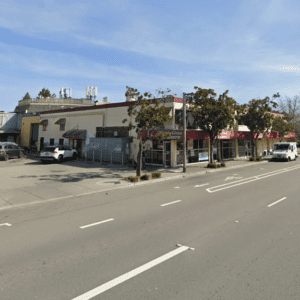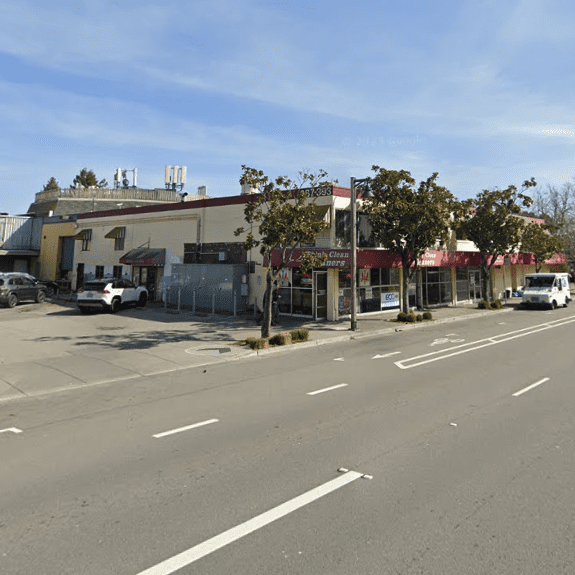 Blight is in the eye of the beholder.
Blight is in the eye of the beholder.
When our team at the Mill Valley Chamber sees a commercial space around town sitting empty for too long, we quietly ask around about possibilities and inquire about how we can help.
Though we certainly have some vacancies across the five commercial districts of the 94941 – downtown, Miller Ave., Alto Plaza, Tam Junction and Strawberry Village, we’ve had some exciting arrivals, including Mamahuhu and MIXT.
But we’ve learned, via an excellent piece in the Mercury News earlier this month, that the reasons for longstanding vacancies go well beyond a property owners’ ability to get financing in tough climate. “Around the Bay Area, vacant eyesores gape,” writes Ethan Baron. “Struggling downtowns in San Jose, Oakland and San Francisco receive plenty of public attention, but cities around the Bay Area are facing a confluence of troubles outside their cores that are replacing formerly vibrant shopping districts with decaying, empty storefronts.”
The drivers of those outcomes – the continued rise of online shopping, the remnants of pandemic lockdowns and the shift to remote work – has been well documented, “but additional less-apparent phenomena are at work,” Baron writes. “Vast numbers of buildings were erected in the ’60s and ’70s as the Bay Area transformed from orchards to suburbs, and the cost of updating them deters prospective tenants and owners alike, while newer spaces remain expensive. Adding to the problem is the 1978 ballot initiative Proposition 13, that keeps property taxes low for owners of many older shopping centers and strip malls.
“There’s a whole set of perverse incentives that are conspiring to keep crappy retail spaces vacant for a long time,” San Jose State University professor of urban and regional planning Kelly Snider told Baron.
Owners of older buildings with low property taxes can still make money with only 20% or 30% occupancy, Snider told Baron. Many won’t update them because they can’t afford to or the improvements would raise their property taxes. Landlords typically want short leases so they can easily hike rents or sell the property, while retail tenants want longer leases, especially if they’ve had to invest in the space. The mismatch contributes to vacancies. Some deep-pocketed landlords keep spaces vacant while they wait for rents to rise, said Max Sandor, in charge of retail sales at commercial real estate firm Kidder Mathews.
It’s unclear where the Shapiro building falls within that landscape. In 2019, the Mill Valley Planning Commission unanimously approved a proposed renovation of the then-54-year-old, two-story, approximately 16,000-square-foot Shapiro building that included the legendary, now-defunct Mama’s Royal Cafe, along with existing tenants at Jolly King Liquors, Marin Theatre Company and more at 387-397 Miller Avenue. The upgrades approved in 2019 largely focused on updated awnings.
Most of the spaces on the street front are vacant.
At that time, Planning Commissioner Greg Hildebrand said, “The city has invested a lot of money in that whole Miller corridor, talking a lot about sustainable design and how can we activate Miller. What I have heard tonight is all about parking. I don’t know how we can get retail to be successful if we force people to increase parking and not have any outdoor space. Our parking requirements are preventing this from being an active retail spot. How can we evolve as a community for the future if what we are talking about is parking as opposed to design and community and activity. And wouldn’t it be nice if there was landscaping and seating outside the restaurant?”
Cities around the Bay Area are trying remedies from grants to punishments to redevelopment.
The Bay Area’s retail dynamic upends the classic rule of supply and demand: Despite plunging appetite for retail space, asking rents are rising in the East Bay and remaining level in Silicon Valley and on the Peninsula, data from Kidder Mathews show. Why rents are not falling with demand remains a “hundred million dollar question,” Max Sander said. Major landlords sitting on empty space hoping retail demand will rise post-pandemic may offer a partial explanation, Sander said.
Bay Area cities are seeking various solutions to the storefront problem. Oakland offered grants for small business owners and landlords, and voters there in 2018 approved a special tax for vacant residential and commercial properties.
San Jose this year has allocated $500,000 and expects to spend another $300,000 on “Storefront Activation” grants for improvements, with small businesses seeking to fill empty storefronts eligible for up to $15,000. A city program imposing quarterly $217 fees on empty buildings downtown appears to have failed to produce any significant drop in vacant storefronts, according to a city report.
But Santa Clara County Assessor Larry Stone believes hitching retail to redevelopment projects will backfire, with “vacant storefronts in brand-new buildings.” City officials are addicted to retail sales-tax revenue, but that golden goose is severely ailing, Stone said. Consumers still want coffee shops, restaurants, hair salons and grocers, but “there’s just not a need enough to fill all the space available,” Stone said. “Storefront retail is a dying enterprise.”
We welcome your thoughts in the comments section on how our community can address these difficult issues by building much needed – and required – housing in the coming years while also matching the vibrance of the incredibly multi-modal Miller Avenue with beautiful multi-use properties.

